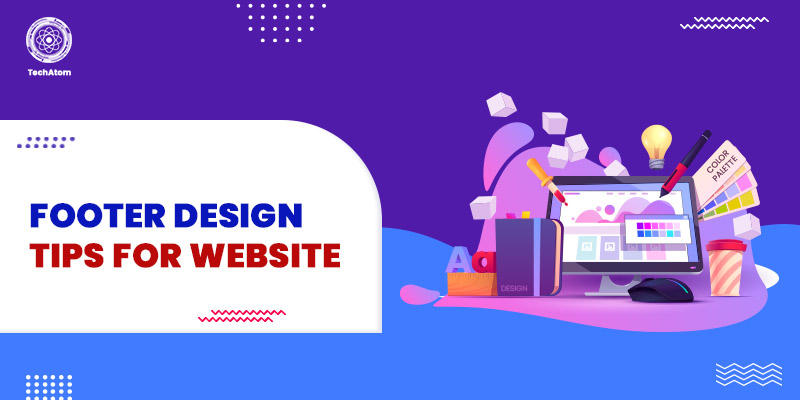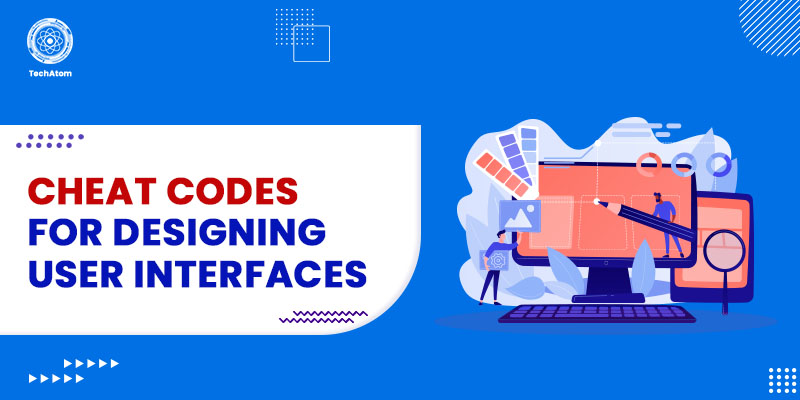People invest a lot of time deciding the elements they want to put on their website, but they often forget one of the most important places on the page, the footer. Yes, the footer is a very prominent element of a website. To find quick links to navigate, find your social media, or your contact information for your team members, people often look at the footer.
Thus, it becomes crucial to seriously consider this part of your website. But when you scroll down, you wonder, what will make it look perfect? What is the perfect footer design?
The answer is that there is no perfect design, but several footer design tips will help you out.
Creative Footer Design Tips Inspiration
Check out these tips and see what fits your bill.
1. Minimalism is the Key
This is what you will see in most footer designs. Keep it simple but effective. Stuffing all the information into a small, cramped space only makes it repulsive to the user instead of impairing useful information. You have space; you have content. Organize it in a sophisticated manner. Look at the most important elements and decide if they should be there. Remove all the less important ones and combine color, simple text, and a fresh design.
2. Your Contact Info
Your website should have a separate page where visitors can find relevant information to contact different departments. But the link to the page should be found in the footer. You can link it or add the basic contact info, including your email, phone number, and office address. You can keep it in the bottom center, extreme right, bottom right, etc. Placement is also important. You can also add a link to subscribe to your newsletter. The link should take the visitor to a page where they can learn about the newsletter and its benefits.
3. Organized Links
One of the best ways to make things easier for the user is to add a separate link for every service you provide in the footer. For example, if you offer website development, application development, digital marketing, and some prominent marketing services, group them under the appropriate heading and list the links below. It looks organized, and the interested user can access the desired section easily. These types of sitemaps help you with your Google ranking as well.
4. Call to Action
It is the best way to inspire a user's action. When they have scrolled down to your footer, give them a button to click, like "explore services”, "explore products”, "know more about the company”, "email newsletter subscription”, etc. These links help you gain more leads and also assist you in achieving your marketing goals. The call to action should be appealing.
5. Let them Know About You
If you are opting for a minimalist design, enhance it by adding two very important links. Many users want to ensure that the company is trustworthy. They want to know more about your history, members, and office. Adding links like "About Us", "Our History", "OurTeam", and "Contact Us" helps the visitors find you and learn about you. Besides, these are when people find it easier to reach you online instead of keeping your business cards safe.
6. Graphic Elements
The text may miss the eye, but pictures will not. You can add logos of your partners, previous renowned clients, or brands to increase your website's aesthetic appeal. The text fills most of your website, and thus, there is a greater chance that the visitors will overlook the appeal to follow on social media or subscribe. Adding icons instead of text is a good alternative to grabbing visitors' attention. But do not cramp the icons into a smaller space.
7. In Line with the Overall Design
Footers are frequently created at the last minute when you realize you forgot to include one. But whatever you choose, it should align with the website's overall design. It should not give away the impression that it was added at last. It should align with the color, text, formatting, font style, graphics, etc. Incorporating it from the beginning is a better idea to avoid any problems later.
8. Incorporate Copyright Text
A copyright warning is an essential element on your homepage. Most websites insert it as an afterthought in tiny text. Use it boldly. Incorporate it with your footer and make it visible. You can also add a link relating to the copyright information, and it should be visible but out of the way of important content.
9. Social Media
Facebook, Twitter, WhatsApp, Instagram, Telegram, LinkedIn, Snapchat, etc., have all become a part of our daily lives. People trust a business that has an online presence and can showcase its products and services online. Thus, always use social media icons in your footer. You are easily reachable with the help of these, and they make your footer look good, contrasting the text format.
10. A Sub Footer
A footer must include the relevant information. Use a sub footer if you have more information or links to add. It allows you to add another layer for more content. Say, you can add your social media icons on the sub footer or watermark images of your different product brands, etc. You can make most of this extra space in several ways. Think of them and come up with something creative.
11. Don’t Clutter
There is a fine line between perfection and mess. It is a good idea to put in a combination of text and graphics. But be careful. It can look messy if not done the right way. You are inserting it to make it easier for visitors to access different website pages, reach out to you easily, and help you generate leads. If you clutter everything in a small space, it will only repulse the user. Remind yourself of the purpose of the footer, and then work along.
12. Don’t Use Too Small Text
Footers are usually at the end and use a smaller font. But it shouldn't be too small. It should be easily readable and not look stuffed into small spaces. Try to pair it with icons and see if the text size is proportionate.
13. Try Adding a Map
Adding a map in the footer can be a good idea unless you are a full-fledged online business. Users can check you out on Google and satisfy themselves with your credibility. Finally, people like a business that offers them the luxury of shopping online and the assurance that they can visit it anytime in case of a problem. Thus, adding a map is a good idea.
14. Keep It Bare
Some websites don’t feature anything on their home pages. The landing page only bears the highlights of the business and asks you to visit another page for details. You can add your footer design on the next page.
15. No More Underlining
You can see this mistake in abundance on several websites. The links to the web pages are often underlined to highlight the pages. These underlines are so prominent that they often steal the spotlight from the text. This is an outdated style of highlighting the important links, which is not suitable anymore.
16. A Hierarchical Representation
A website follows a certain hierarchy. The main highlights are shared at the top. The rest of the content follows it, and finally, there is a footer. In the footer case, you must also follow the hierarchy. It should contain the important elements at the top, then contact information, social media icons, and then your copyright text. Different-sized fonts can also be used to emphasize the importance of the footer.
17. Make Good Use of Space
That doesn't mean you have to cram everything into it. Instead, make good use of the available space. Allow space around the contents to make them stand out. Allow space for different links to be clicked. It improves readability and increases clicks.
Why is a Footer so Important?
A footer is the last part of a web page but is also very important. Here are a few points to emphasize its importance.
1. To Earn Leads
By adding a call to action or a subscription button, footers allow visitors to take the next step. By signing up or clicking on the social media icons, they stay with you even after leaving the page, earning you more leads.
2. Make Navigation Easy
Many users run straight to the footer to find the various services. If you have a site map in the footer, it will make it easier for users to find what they are looking for. When a user is satisfied, they reward your efforts and thoughtfulness with loyalty to your site and product.
3. It Summarizes your Website
A footer is more important than you think, and you won’t believe it, but people do scroll down to it, only to find the required information quickly. By placing important links in the footer, you summarize your website's content in the footer, emphasizing the entire content and making the visitor navigate easily.
4. It’s Appealing
Your footer includes everything, from important social media links, contact information, and a call to action. Making it appealing, in contrast to the sober website, draws attention and makes visitors check out the other areas as well.
Conclusion
These were some of the creative footer design tips for websites that you can incorporate. Not all of them will fit on your website, but you can read them all and decide what will suit your website best.
The footer design of a website is about choosing what to include to help visitors.
The expert web designers at TechAtom can make your business website engaging and interactive by creating unique footer designs. Contact us to learn more about how our expert web designers can design a clutter-free yet information-packed footer for your business website.
People are also reading:
- Web Development Technologies
- What is Web Designing?
- Cheat Codes for Designing User Interfaces
- Creative Web Design Trends
- Create a Website
- Web Development Frameworks
- Common Mobile App Design Mistakes
- Native vs Hybrid Apps
- Best Startup Ideas
- WordPress vs Web Development
Frequently Asked Questions
1. Does a footer need to be on every page?
Yes, the presence of a footer on every page of your site makes the footer more helpful.
2. What are the elements of a footer?
The main elements of a footer on a website are information about the owner, copyright information, contact information, sitemaps, back-to-the-top links, social media links, etc.
3. What size should a footer be on a website?
The recommended size of a footer on a website is 2400px width and 500px height. It should be in JPG, PNG, or GIF format and less than 2MB in size.
4. What is a footer link?
Footer links are also known as site-wide links or boilerplate links. These links appear on nearly every page of a website. These types of links are normally header links, footer links, or links that appear on the sides of a website (floating widgets and others).
5. Why are footers important for SEO?
From an SEO perspective, footer links increase relevancy signals and improve quality signals by helping users better navigate a website. This helps in reducing the bounce rate and boosts rankings on SERPs.




